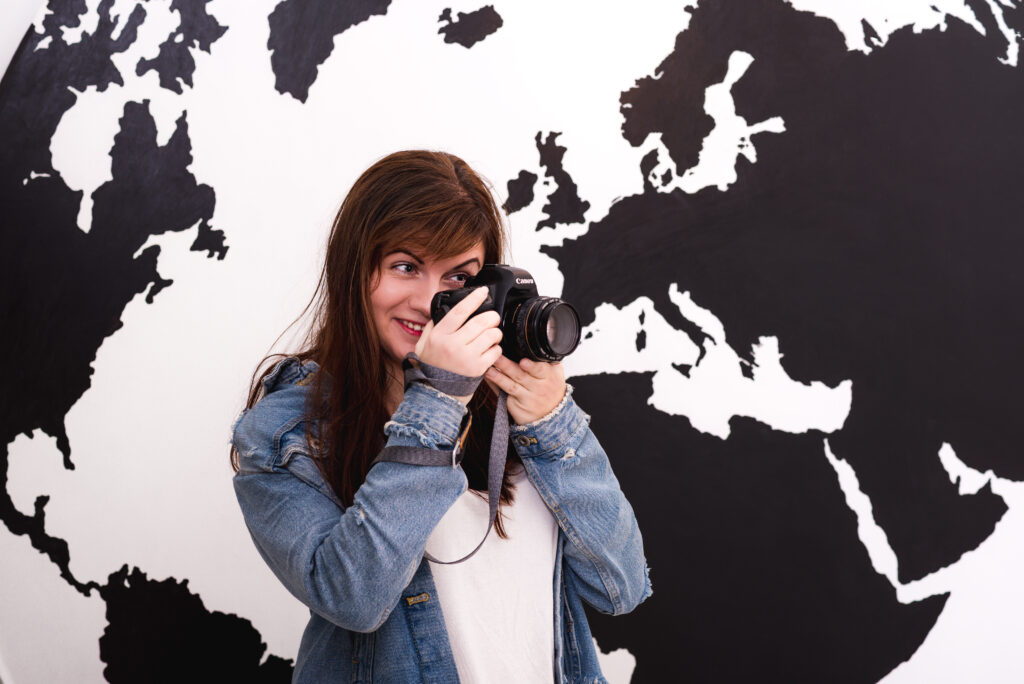
Andra Hamburg on on viimased seitse aastat tegelenud igapäevaelu dokumenteerimisega läbi objektiivi.
English below
Tema fotograafia keskmes on argiste hetkede märkamine ja ootamatute stseenide leidmine linnakeskkonnas. Inspiratsiooni ammutab ta nii vanakooli tegijate kui ka tänapäevaste fotograafide loomingust, nagu Martin Parr ja Craig Whitehead.
Kuidas ja millal sa enda jaoks tänavafotograafia avastasid?
Täpselt enam ei mäleta, aga see võis olla umbes seitse aastat tagasi, kui esimesed märgid sellest minuni jõudsid. Nimelt tegin vabatahtlikuna tööd toona ühes noorteajakirjas, kui sattusin fotohuviliste noorte grupiga („Xplore Tallinn“) Koplit avastama. Ilmselt sealt sain mingi alge, hakkasin rohkem tänaval pildistama ja siis avastasin Airi tänavafotogrupi.
Mis tänavafotograafia sinu jaoks tähendab? Miks sa just tänaval pildistad?
Minu jaoks on see argiste hetkede märkamine ja ära tabamine. Millestki lihtsast kunstilise väärtuse loomine. Sest mida muud see on kui fotokaameraga jalutamine, millegi otsimine ja hetke märkamine.
Tänaval pildistamine on kuidagi loomuliku rada mööda tulnud. Inimesed tunduvad ju nii põnevad oma tegemistega. Tänaval on põnev pildistada, sest iga päev ootavad uued stseenid ja karakterid sind ning kunagi ei tea mis juhtuda võib. Mulle just see üllatusmoment meeldibki.
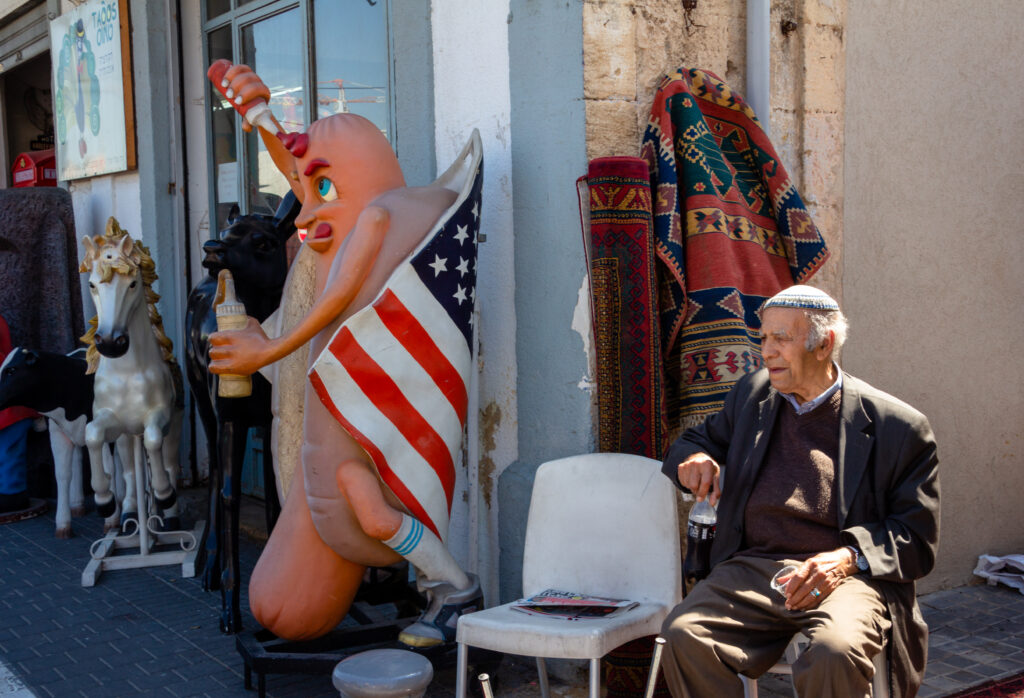
Kes või mis sind fotograafias enim mõjutanud on? On sul eeskujusid?
Mõjutusi on ilmselt palju, kuna infot tuleb ju palju igalt poolt. Vanakooli tegijaid on väga inspireeriv alati vaadata, aga palju on ka häid uusi tegijaid.
Samas on kaks tegijat, kes mulle alati väga meeldinud ja korda läinud on. Üks neist on Martin Parr, kellega on õnnestunud ka kohtuda, ning teine kauaaegne lemmik on Craig Whitehead, kes katsetab nüüd ka foto abstraktsemat poolt. Muidugi häid tegijaid on veel, tuleb lihtsalt Google lahti teha.
Kas sul tänaval pildistamisel ka mingi lemmik teema või projekt tekkinud, millele keskendud kui sammud linna keskkonda sead?
Viimasel ajal olen pigem lihtsalt vooluga kaasa läinud, aga mõne aastaga on kogunenud teatud hulk pilte, mida näen küll seeriana, aga mis veel pole ehk piisavalt küps mu jaoks.
Üks mu lemmik-teema on olnud ka portreid teha tänavatel, kuid tunnen, et see on Tiktoki lainetusena kuidagi devalveerunud. Samas liigub ju meie ümber iga päev ringi nii palju huvitavaid karaktereid, tore oleks nad ka kinni püüda. Ehk võiks seda teemat ikkagi edasi jätkata.
Kui tihti sa tänavafotograafiat jõuad pildistama?
Kindlat aega, millal pildistamas käin, mul küll pole, pigem on see aja ja pealehakkamise küsimus. Mingi aeg võtsin eesmärgiks, et kuus korra kindlasti jõuaks, aga ma arvan, et seda on kohati vähe. Samas suvel olen tihedamalt pildistanud.
Ma pigem katsun fotokaamerat alati kotis hoida, et kui mingi hetk end ilmutama hakkab, siis on hea haarata. Samas aeg-ajalt nädalavahetuseti teen ka teadlikult fotojalutusi. Isegi, kui head kaadrit ei tulnud, on päev ikka korda läinud, sest sai värskes õhus olla ja liikuda.
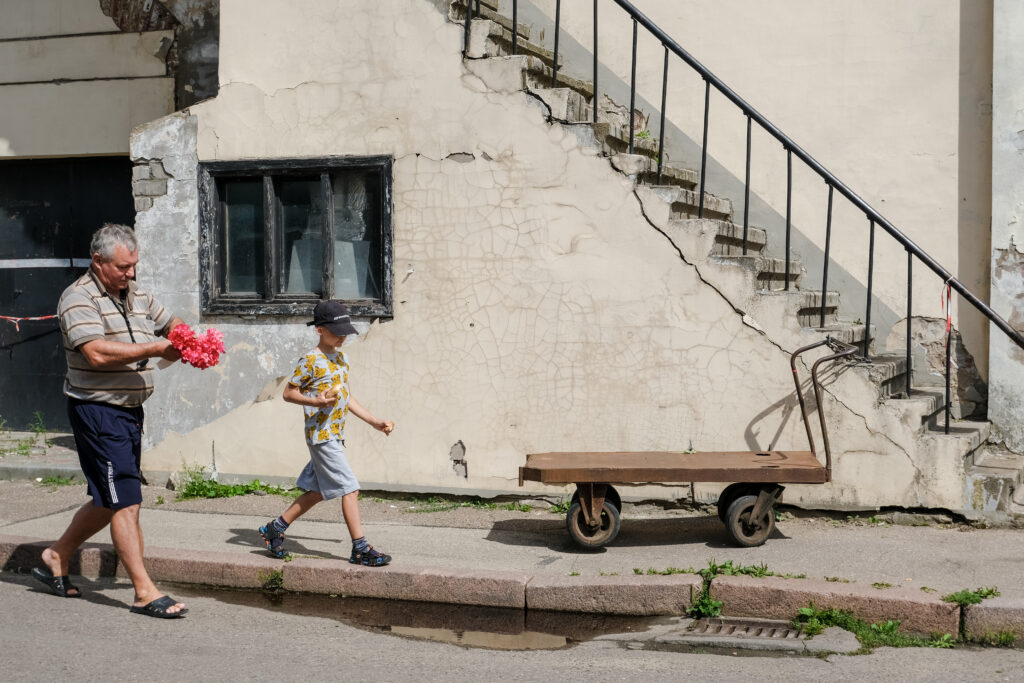
Kas sul on ka mõni lemmik pildistamise koht välja kujunenud?
Otseselt lemmikut ei ole, aga millegipärast viivad jalad tahes tahtmata ikka vanalinna poole või sealt läbi. Kuigi võiks ju ka äärelinnu rohkem avastada.
Kas sulle meeldib rohkem pildistada välismaal või Eestis? Miks see nii on?
Raske küsimus. Selles mõttes oleks välismaa hea lihtne vastus, kuna sa näed kõike värske pilguga ja haarad pildistamise momente võib-olla kiiremini kui kodulinnas pildistades. Eks suurlinnades ole rohkem inimesi, keda pildile püüda ja neid pildistamise kohti ka rohkem. Selles suhtes on hea jälle aeg-ajalt ära käia ja inspiratsiooni koguda mujalt.
Samas ei saa Eestit kõrvale jätta. Siin on ka põnev pildistada, kuigi kõik võib juba tunduda tuttav ja ära pildistatud. Võib küll juhtuda, et üheksal korral kümnest sa ei leia juba käidud radadelt midagi, aga kui see kümnes kord üllatab, siis see juba on seda väärt.
Pean küll tunnistama, et vahel tekib Eestis pildistades teatud tüdimus, aga see on mu enda viga, sest paratamatult kipun ikka samades kohtades pildistama ja siis tuledki tühjade kätega koju. Eestis on aga kindlasti pildistada küll ja veel. Näiteks oleks tore väikelinnade idülli jäädvustada, miskipärast seda pole veel eriti tehtud.
Seega ma ei oska sulle ühest vastust anda, pigem on siis võtmesõnaks ehk vaheldus.
Kas su pilt on pigem värviline või must-valge?
Minu puhul pigem värviline, sest mulle värvid meeldivad ja see tunnetus saab kuidagi mõnusam ja terviklikum. Mõnel juhul aga mõjub just must-valge paremini ja klassikalise fotona. Eks see ole maitse küsimus.
Hiljuti lugesin just värvifoto eestvedaja Joel Meyerowitzi raamatut „A question of colour“ ja noh, paraku veendusin, et mind ikka tõmbab rohkem värvi poole.
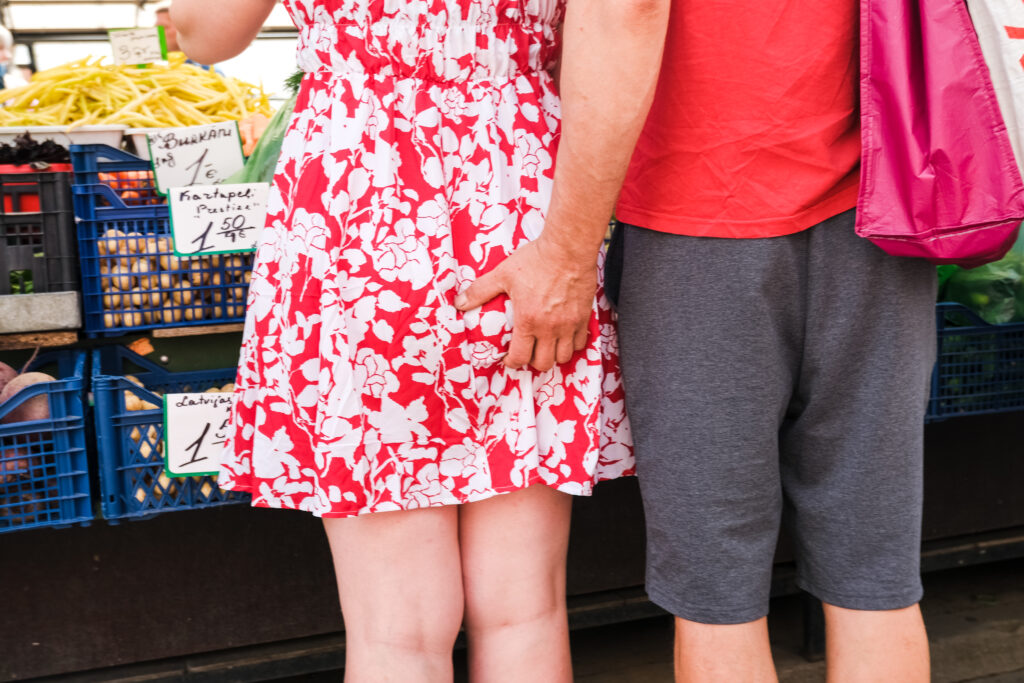
Kui palju sa postproduktsioonile panustad?
Mitte väga palju, pigem teen kiired korrektsioonid. Üldiselt töötlemist ma väga ei naudi, see muutub kohati üksluiseks. Olen küll kunagi mitmeid tunde proovinud ja katsetanud, aga ma ei näe sel enam mõtet. Kui sa juba kaameras head pilti ei saa, siis ega sellest paremat tulemust välja ei võlu. Samas mine sa tea, kõikvõimas AI on nüüd ju olemas..
Millist tehnikat sa pildistamisel kasutad? Kas sa arvad, et see mängib olulist rolli lõpptulemusel?
Läksin hiljuti üle Fujile. See nõuab kohati veel ümber harjumist, aga samas on hea mugav ja kiire ning mis peamine, väike.
Tehnika minu jaoks nii suurt rolli ei mängi, peaasi, et töötab ja tean, kuidas see töötab. Põhitõed peaks siis selged olema, ükskõik mis kaamerat kasutad. Eks tänavafotograafias ole ju nii, et pead tihti kiirelt reageerima või siis ette nägema teatud olukordi ja tehnikat vastavalt seadistama. Olen paraku selle tõttu ka võimalused maha maganud, aga eks enda vigadest õpidki kõige paremini.
Mis sa arvad, kas telefon sobiks tänavafotograafia harrastamiseks. Kui tihti sa ise telefoniga tänavatel pilte teed?
Ikka sobib. Oleneb lihtsalt kuidas asjale lähened. Kahju on näha, et inimesed unustavad tihti oma kaamerasilma enne pildistamist puhastada.
Ma olen nüüd proovinud rohkem ka telefoni haarata, kui midagi silma jääb. Kohati tundub, et ma ei hooma seda kaadrit nii hästi telefonis kui seda teen kaameras. Telefon jätab üheplaanilise mulje, mis mulle väga ei sümpatiseeri. Olen küll telefoniga snapshote teinud, aga millegipärast on need jäänud tolmu koguma. Viimasel ajal olen hoopis lühivideoid proovinud teha.
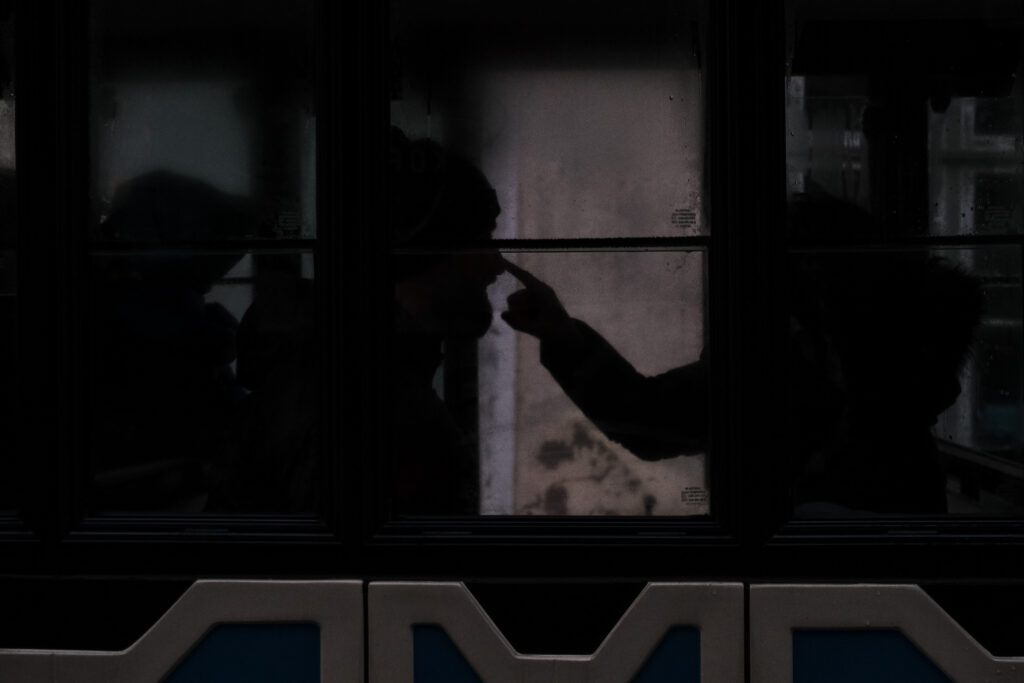
Millised on sinu soovitused neile, kes sooviksid enda tänavafotograafiat jagada ja tagasisidet saada?
Soovitaks liituda erinevate (tänava)fotograafia gruppidega, ka välismaa omadega. Osad neist teevad ka erinevaid konkursse või challengeid, kus saad vahetut tagasisidet. Urban Street Photography on näiteks üks aktiivsemaid. Aitab vist juba sellest kui paned otsingusse „street photography“. Viimasel ajal neid sajab juurde nagu seeni pärast vihma.
Uued väljundid on ka nt Discordi äpis, ühte välismaist juhib näiteks Saksa tänavafotograaf Samuel Lintaro.
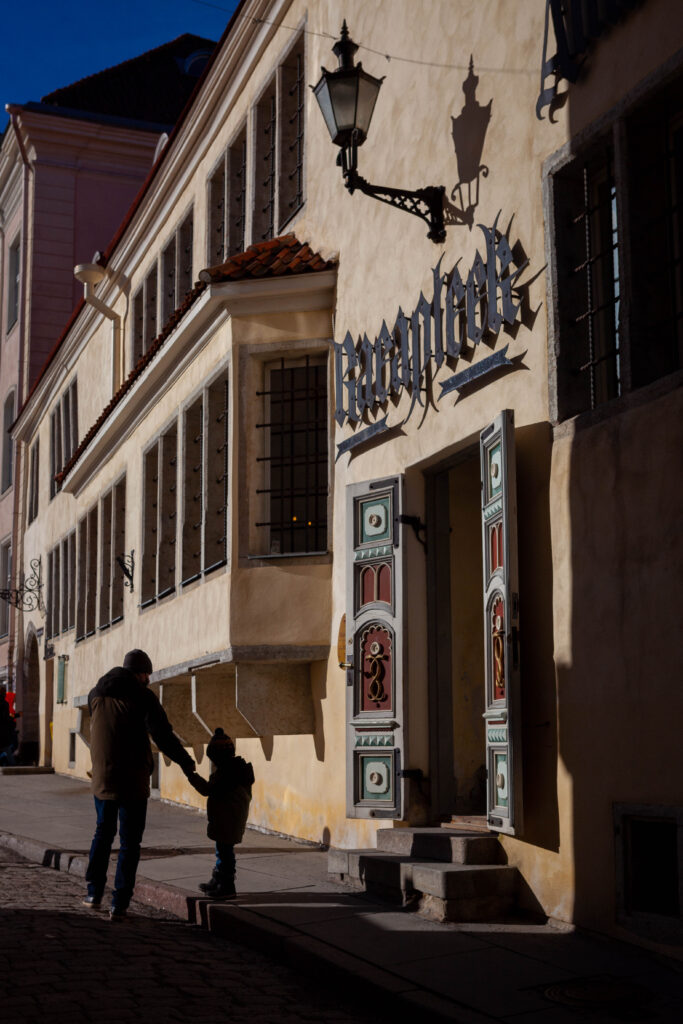
Sa hoiad silma peal välismaistel tegijatel, milline oleks sinu arvates parim koht uurida ja jälgida, mis toimub mujal maailmas.
Mugavam variant on ikka seal, kus ise harjunud käima ehk siis Instagram, Facebook ja Youtube. Liituge tänavafotogruppidega, vaadake mida on varasemalt tegijad teinud ja saategi õppida, areneda ja kursis olla sellega, mis mujal toimub. Instagramis on näiteks koondgaleriid, kus erinevaid tänavafotograafe tutvustatakse, näiteks @streetphotographyinternational, aga on ka trendiks saanud, et tänavafotograafid jagavad ka oma storydes teiste töid.
On sul ka algajatele häid nippe jagada või ehk mõni inspireeriv raamatu soovitus?
Uusi raamatuid tuleb välja viimasel ajal päris palju, aga soovitaks kindlasti algajatele neist kahte: Matt Stuarti „Think like a street photographer“ ̶ lihtne, inspireeriv ja kaasahaarav teos, kust alustada ja nippe hankida. Lisaks veel Sean Tuckeri „The meaning in the making“, mis on vähe filosoofilisem teos, aga kõikidele loovatele inimestele minu arvates üks kohustuslik lugemine, mis võiks raamaturiiulil olla ja aeg-ajalt ikka ennast meelde tuletada.
Kas saaksid ühe oma pildi saamise lugu jagada.
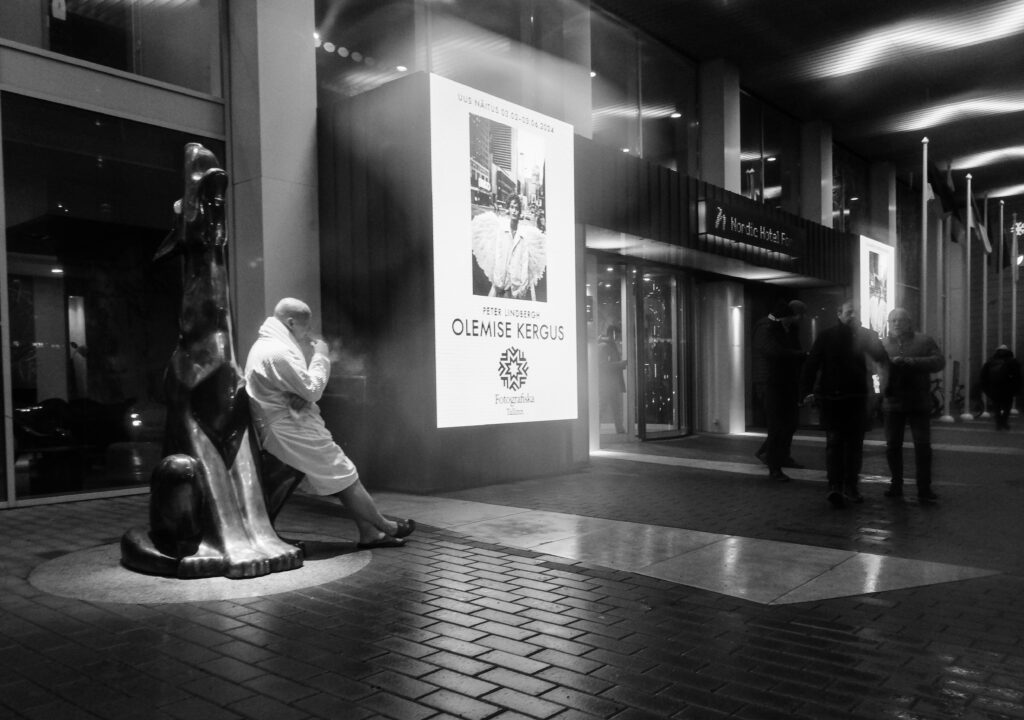
Ikka. See pilt on tehtud selle aasta veebruaris. Miskil imekombel siis lund maas polnud, aga oli kahtlemata tormine ilm ja vihma ladistas nagu oavarrest. Olin töölt tulles miskipärast tavapärasest rohkem motiveeritud ja haarasin fotoka, et teha üks tiir kesklinnas. Olin juba mõnda aega jalutanud, kuid miskit erilist silma ei hakanud ning olin juba üsna märjaks saanud. Hakkasin kodu poole jalutama, kui Nordic hotelli juures jäi eemalt silma keset vihmast ilma hommikumantlis suitsu nautiv mees.
Teadsin kohe, et tahaks ta pildile püüda, sest see tundus nii sürreaalne hetk. Tagasihoidliku eestlasena ma muidugi kaamerat talle näkku suunata ei julgenud ja läksin edasi ning olin juba lootust kaotamas. Siis aga otsustasin ümber pöörata ja pildi ära teha. Kaamera oli muidugi juba üsna märjaks saanud selle ajaga ning ei tahtnud väga koostööd teha. Samas hetk sai jäädvustatud ja kuigi see ei tulnud päris nii välja nagu soovisin, siis olin siiski rõõmus, et olin julguse kokku võtnud ja huvitav hetk sai tabatud. Suitsetav mees koos selle Fotografiska näituse reklaamiga “Olemise kergus” muutus kuidagi terviklikuks minu jaoks. Pean muidugi ära mainima, et see reklaam seal liikus ka veel kiirelt.
For the past seven years, Andra Hamburg has been documenting everyday life through a lens.
Her photography focuses on noticing everyday moments and finding unexpected scenes in the urban environment. She draws inspiration from the work of both old-school and modern photographers such as Martin Parr and Craig Whitehead.
How and when did you discover street photography?
I can’t remember exactly, but it was about seven years ago when the first hints of it reached me. At the time, I was working as a volunteer for a youth magazine, and I joined a group of young photography enthusiasts called “Xplore Tallinn” exploring the area of Kopli. That’s probably where it all started—I began taking more photos on the streets, and then I discovered Airi’s street photography group.
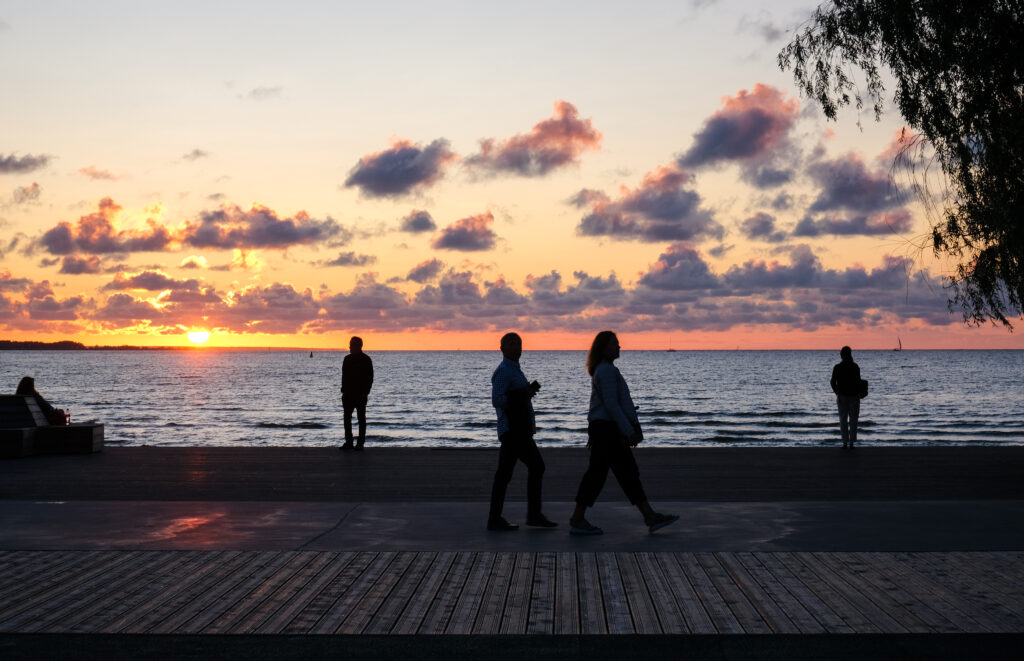
What does street photography mean to you? Why do you photograph on the street?
To me, it’s about noticing and capturing everyday moments. It’s about turning something simple into artistic value. Because essentially, what is it other than walking around with a camera, searching for something, and recognizing the moment when it arrives? Street photography has naturally become my path. People, with their activities, are so fascinating. Photographing on the street is exciting because new scenes and characters await you every day, and you never know what might happen. It’s that element of surprise that I love.
Who or what has influenced you the most in photography? Do you have any role models?
There are probably many influences since information is constantly flowing in from everywhere. The old-school photographers are always inspiring to look at, but there are also many great new talents. Two photographers, however, have always resonated with me. One of them is Martin Parr, whom I’ve had the chance to meet, and the other is my long-time favorite Craig Whitehead, who is now also exploring the more abstract side of photography. Of course, there are many other great photographers; you just need to open Google.
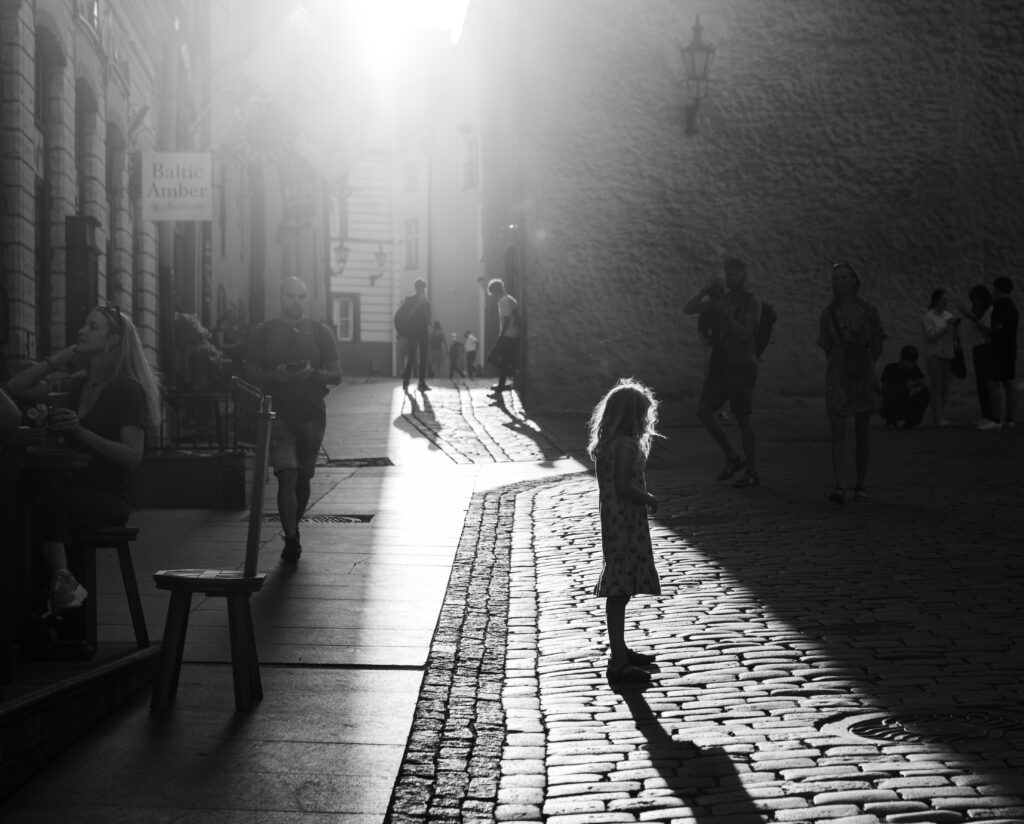
Do you have any favorite themes or projects you focus on when heading out into urban environments to photograph?
Lately, I’ve been going with the flow, but over a few years, I’ve accumulated a certain number of photos that I see as part of a series, although they’re not quite ready enough yet, in my opinion. One of my favorite themes has been taking portraits on the streets, but I feel it’s become somewhat devalued with the wave of TikTok. Still, there are so many interesting characters around us every day, and it would be great to capture them. Maybe I should continue with this theme after all.
How often do you manage to do street photography?
I don’t have a fixed schedule for when I go out shooting; it’s more a matter of time and motivation. At one point, I set a goal to go out at least once a month, but I think that’s sometimes too little. In summer, I tend to shoot more often. I try to always keep my camera in my bag, so if a moment arises, I can quickly grab it. Occasionally, I also take intentional photo walks on weekends. Even if I don’t capture a great shot, the day still feels worthwhile because I got to be outside and move around.
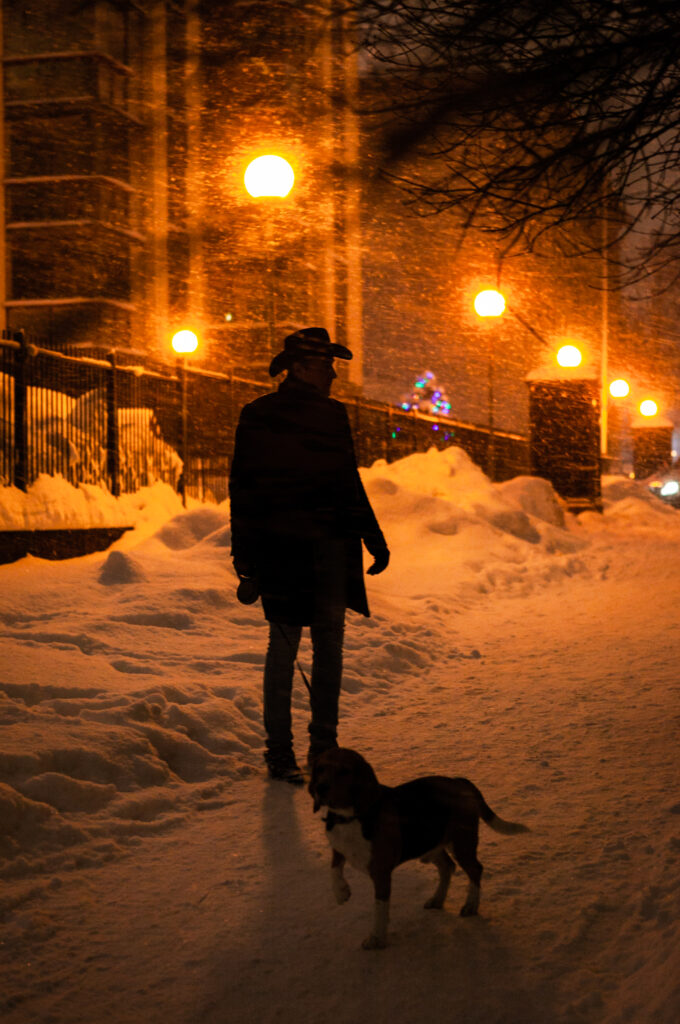
Do you have a favorite spot for photographing?
Not really a specific favorite, but I often find myself gravitating toward the Old Town or walking through it. Though, I could explore the suburbs more.
Do you prefer photographing abroad or in Estonia? Why?
That’s a tough question. It’s definitely easier to say that photographing abroad is better, because you see everything with “fresh eyes” and might capture moments more quickly than you would in your hometown. Big cities have more people to capture and more locations for photography. So, it’s nice to travel from time to time and gather inspiration from elsewhere.
However, I can’t dismiss Estonia either. It’s also interesting to photograph here, even though everything might seem familiar and already captured. It might happen that nine out of ten times, you won’t find anything new on familiar paths, but if that tenth time surprises you, it’s worth it.
I must admit that I sometimes get a bit bored photographing in Estonia, but that’s my own fault since I tend to shoot in the same places repeatedly, and that’s when you come back empty-handed. However, there’s still plenty to capture in Estonia. For instance, it would be great to document the charm of small towns, as it hasn’t been done much yet. So, I can’t give you a definitive answer—variety might be the key here.
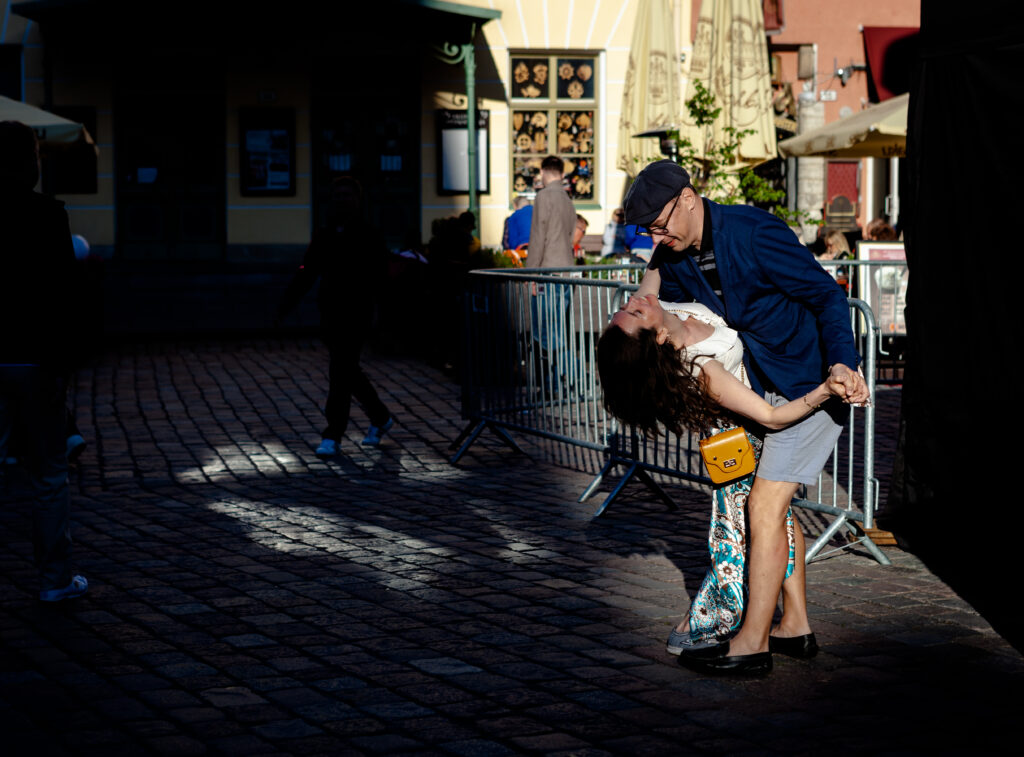
Are your photos more colorful or black-and-white?
For me, they’re more colorful, because I love colors, and it gives a more pleasant and complete feeling. In some cases, however, black-and-white works better, giving a more classic feel. It’s a matter of taste. Recently, I read Joel Meyerowitz’s book A Question of Color, and I must say, I was convinced that I’m still more drawn to color.
How much time do you invest in editing?
Not much, I usually do quick corrections. I don’t particularly enjoy editing, as it becomes somewhat monotonous. I used to spend hours experimenting, but I don’t see the point anymore. If you don’t capture a good photo in the camera, you won’t be able to make it much better afterward. Then again, who knows—now we have powerful AI.
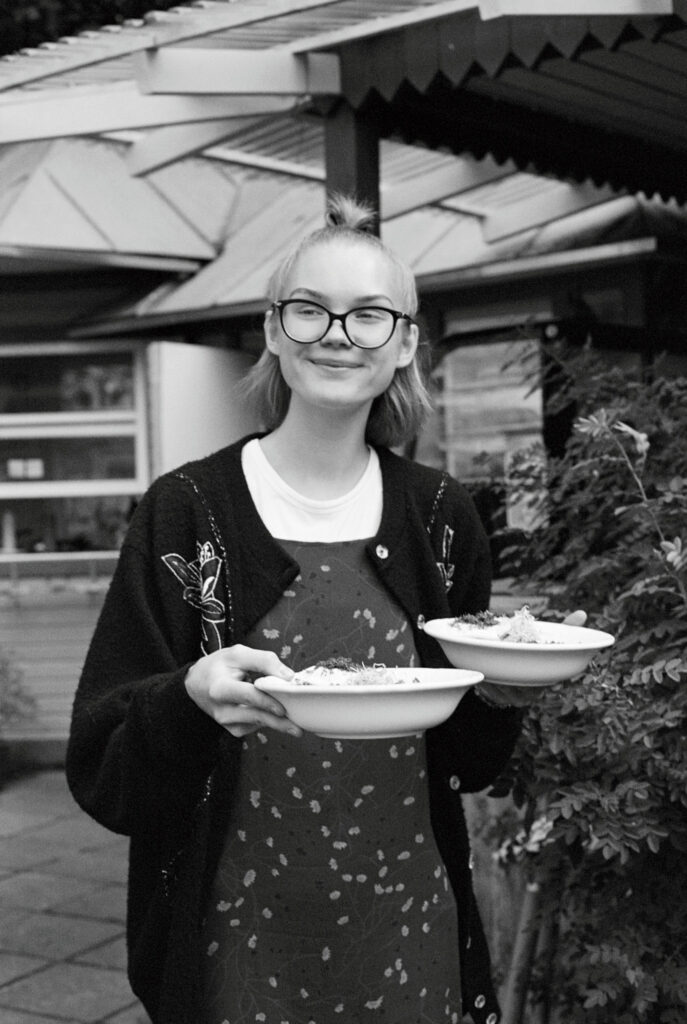
What equipment do you use for shooting? Do you think it plays a significant role in the final result?
I recently switched from Canon to Fuji. It takes some getting used to, but it’s comfortable, quick, and most importantly, compact. Equipment doesn’t play that big of a role for me as long as it works and I know how to use it. The basics should be clear, no matter what camera you use. Street photography often requires quick reactions or the ability to anticipate certain situations and adjust your settings accordingly. I’ve missed opportunities because of this, but you learn best from your own mistakes.
Do you think a phone is suitable for street photography? How often do you use your phone for taking photos on the streets?
Definitely. It depends on how you approach it. It’s a shame when people forget to clean their phone camera lens before taking a photo. I’ve been trying to use my phone more often when I notice something interesting. Sometimes, I feel that I don’t grasp the frame as well on the phone as I do with a camera. The phone tends to give a more flat impression, which I don’t particularly like. I’ve taken snapshots with my phone, but for some reason, they’ve ended up just gathering dust. Lately, I’ve been trying out short videos instead.
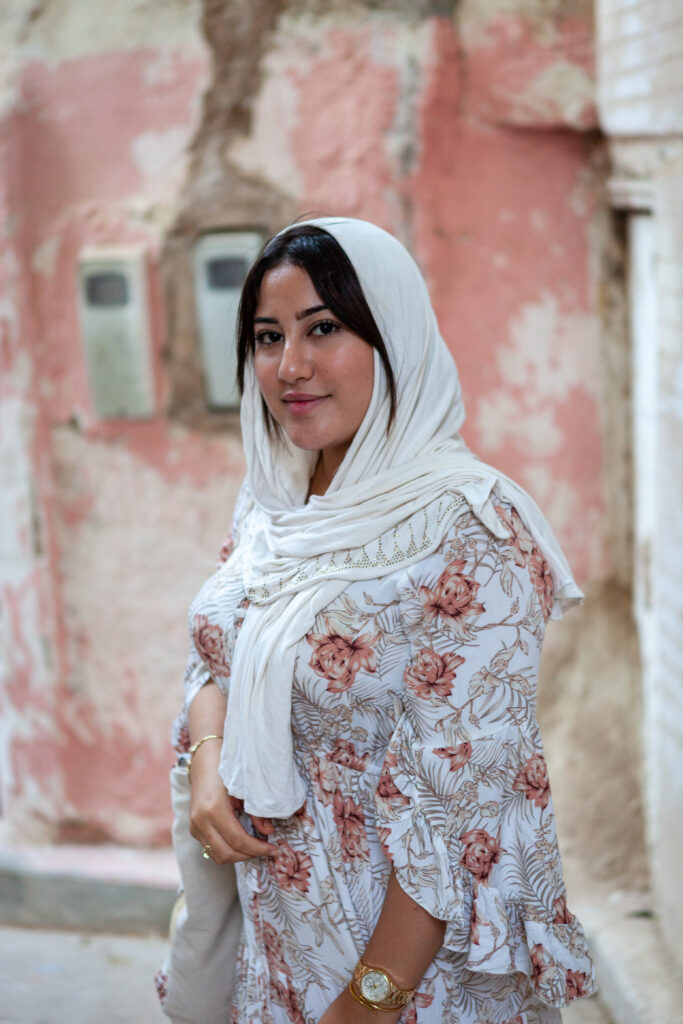
What advice would you give to those who want to share their street photography and get feedback?
I’d suggest joining various (street) photography groups, including international ones. Some of them host different competitions or challenges where you can get direct feedback. I think that Urban Street Photography is one of the most active groups. It’s often enough to just search “street photography.” Lately, new groups have been popping up like mushrooms after rain.
There are also new platforms like Discord, where a foreign street photographer, Samuel Lintaro, for example, runs a group.
You keep an eye on international photographers — where do you think is the best place to explore and follow what’s happening elsewhere in the world?
The easiest option is to stick with the platforms you’re used to, like Instagram, Facebook, and YouTube. Join street photography groups, see what other photographers have done, and you’ll be able to learn, grow, and stay in touch with what’s happening elsewhere. On Instagram, there are curated galleries that feature various street photographers, such as @streetphotographyinternational, and it’s become a trend for street photographers to share others’ work in their stories as well.
Do you have any tips for beginners or perhaps a book recommendation that’s particularly inspiring?
Lately, there have been quite a few new books published, but I’d definitely recommend two for beginners: Matt Stuart’s Think Like a Street Photographer — a simple, inspiring, and engaging book to start with and gather tips. Plus Sean Tucker’s The Meaning in the Making, which is more philosophical but, in my opinion, a must-read for all creative people. It’s a book worth keeping on your shelf to revisit from time to time.
Can you share the story behind one of your photos?

Sure. This photo was taken in February this year. Strangely, there wasn’t any snow on the ground, but it was certainly stormy, and it was pouring rain. After work, for some reason, I was more motivated than usual, so I grabbed my camera to take a walk around the city center.
I had been walking for a while, but nothing special caught my eye, and I was already quite soaked. I started heading home when, near the Nordic Hotel, I spotted a man in a bathrobe, smoking in the middle of the rainy weather.
I knew right away that I wanted to capture him because it seemed like such a surreal moment. Being a reserved Estonian, I, of course, didn’t dare to point the camera directly at him, so I kept walking and was already about to give up. But then I changed my mind, turned back, and took the shot. By then, my camera had gotten pretty wet, and it wasn’t cooperating much. Still, I managed to capture the moment, and although it didn’t turn out exactly as I envisioned, I was glad I found the courage to take the shot.
The smoking man with the advertisement for the Fotografiska exhibition saying “the lightness of being” somehow made the scene complete for me. I should also mention that the ad was moving quickly on the display!
